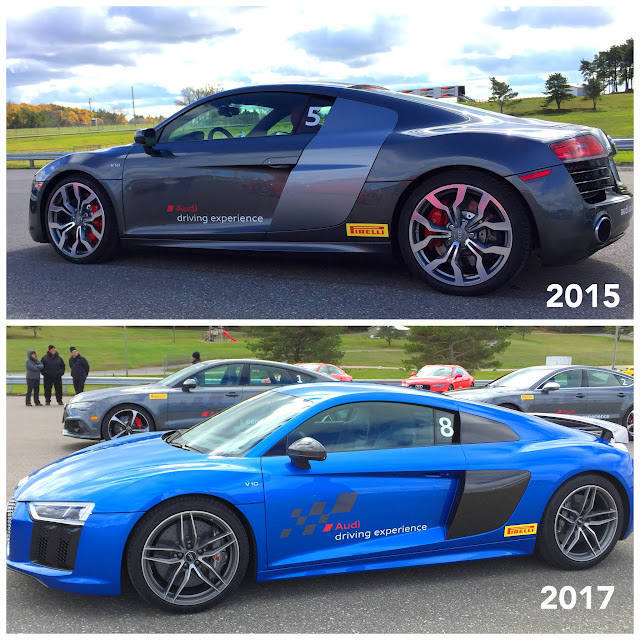The 2017 is slightly wider and longer and weighs 50 kg less, but that’s tough to see.
Here’s a quick guide to the main differences between the 2015 and 2017 Audi R8.
1 – Exhaust
Round is so 2015.
2 – All-new Steering Wheel
Modelled after a racecar, all main functions can be controlled using your thumbs.
3 – Interior
It’s all-new, and much less cluttered. The addition of the electronic parking brake helped.
And see what’s missing? The dash screen has been deleted.
4 – Instrument Cluster
Gone are the dials and dash screen, and in its place is one 12.3″ screen in the instrument cluster than can be configured in multiple ways.
It’s called Audi virtual cockpit, learn more in here.
5 – Engine has an X
Probably the easiest way to tell – there’s now an X-shaped-bracket atop the engine.
Also, its token note is now fuller, and fuel economy is improved by 13%.
Bonus – Canadian Lasers
If it has laser headlights, it’s a Canadian 2017, because we’re the only country to get this tech.
More about the lasers here.
Either model year is fine with me.
I tracked both, that story here.
Blog tag = 2017 Audi R8










